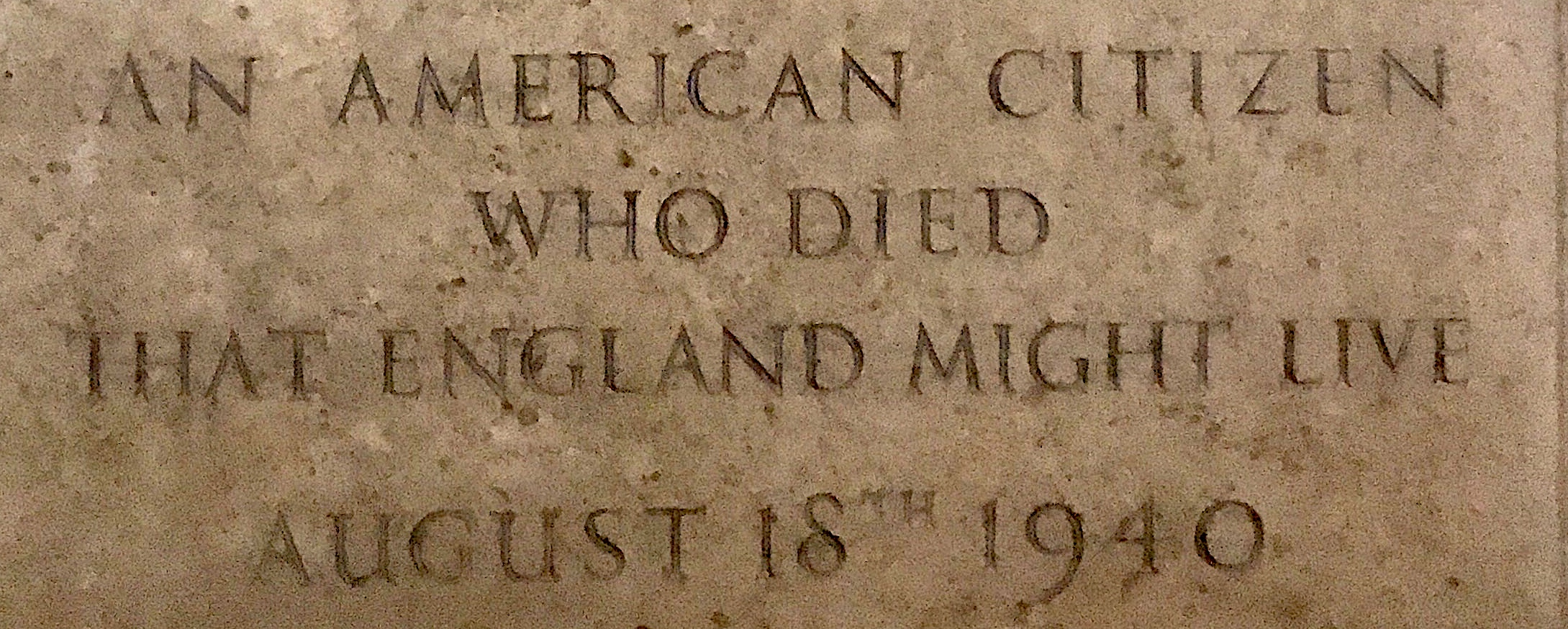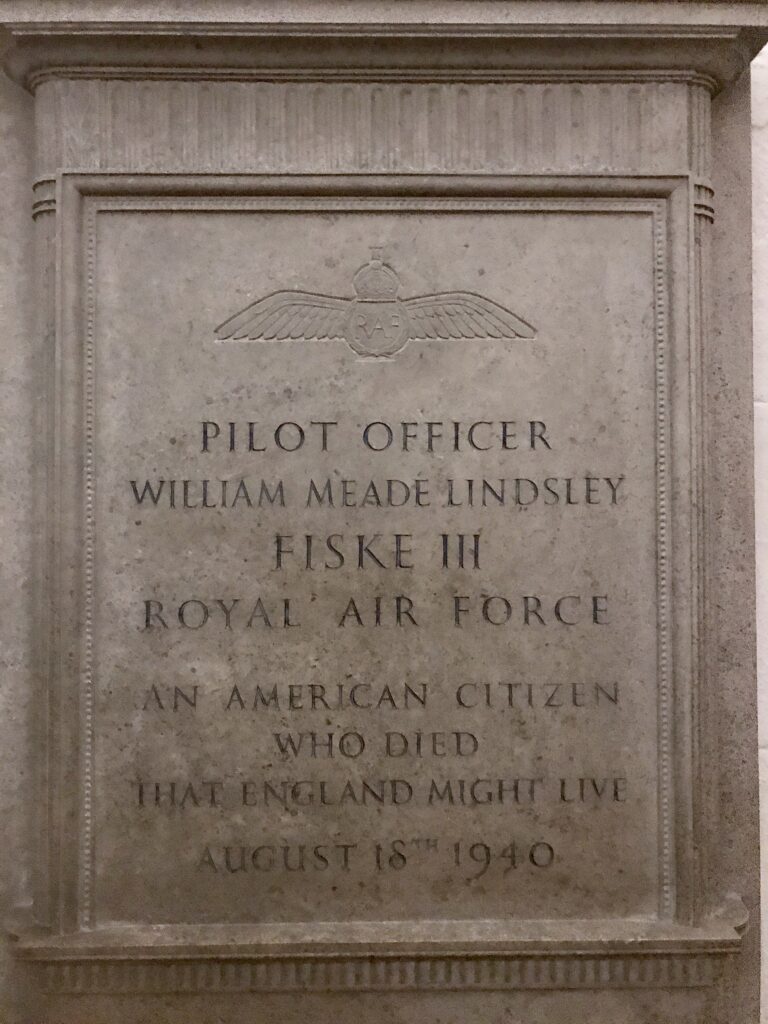
Among the 28,000 names listed in the ‘Roll of Honor’ in the American Memorial Chapel in St Paul’s will be that of William Meade Lindsley Fiske III. And in the crypt of the cathedral, close to the tomb of Nelson, is a larger memorial to the man known as Billy Fiske.
He wasn’t the first American serviceman killed in WW2 (that seems to have been Robert M Losey, a US military attache caught up in the German invasion of Norway in May 1940), but he was certainly one of the first combatants to lose his life, dying in hospital on 17 August 1940 from burns after his Hurricane crash landed following a dogfight during the Battle of Britain. He was buried in Boxgrove cemetery, near to the Tangmere airfield where he had been based. (There is Pathe News footage of Fiske’s funeral here.)
This was some 16 months before the USA entered the war, but Fiske was one of a number of young Americans (he was only 29 when he was killed) who had volunteered to fly and fight in the RAF (Fiske had to pretend to be Canadian as citizens of neutral countries were not officially allowed to join up).
The scion of an East coast banking family, Fiske had a privileged youth, educated in private schools in the US, France and England, and graduating from Cambridge University. “He was the kind of man who the sunlight seemed to follow around. He could have stepped out of the pages of a Scott Fitzgerald novel.”
Now relatively little known in the US (although this campaign to erect a statue to him near the new US Embassy might counter this), in the 1930s he was extremely famous. As a 16 year old Fiske became the then youngest ever Winter Olympic gold medallist as ‘driver’ of the victorious 1928 US bobsleigh team. He was the US team flag bearer in the opening ceremony of the 1932 Winter Olympics where he went on to win a second gold. He held the record for the Cresta Run.
He was invited to captain the US team in the 1936 Winter Olympics in Garmisch-Partenkirchen, but declined. Although he didn’t give a (public) reason, it seems certain that this was Fiske’s protest against the Nazi-organised games.
(He is also credited with starting the skiing industry in the US; he and a friend, inspired by their experience of alpine skiing in Europe, bought a hunting lodge outside Aspen, Colorado with plans to turn it into a resort.)
But it is as a casualty of war – specifically as an American casualty of war – that he is commemorated in St Paul’s. There is dispute over whether Fiske shot down any German planes in the sorties he flew during the Battle of Britain in July and August 1940 – some sources say he downed six, Fiske claimed at two, the Battle of Britain Historical Society says there were no ‘confirmed’ kills – but his ‘value’ as a symbol of the fight against Nazism to the public of the still-neutral US easily outweighed any such considerations.
On 4 July 1941 – US Independence Day of course – the memorial to Fiske was unveiled by Sir Archibald Sinclair, the Secretary of State for Air. The inscription reads: An American citizen who died that England might live; the message to the American public was that their countrymen are already fighting and dying in the cause of freedom.
Links
- the Billy Fiske Foundation
- Hillingdon Council (home of the Battle of Britain Bunker): Billy Fiske Biography
- RAF Facebook page – Billy Fiske video


